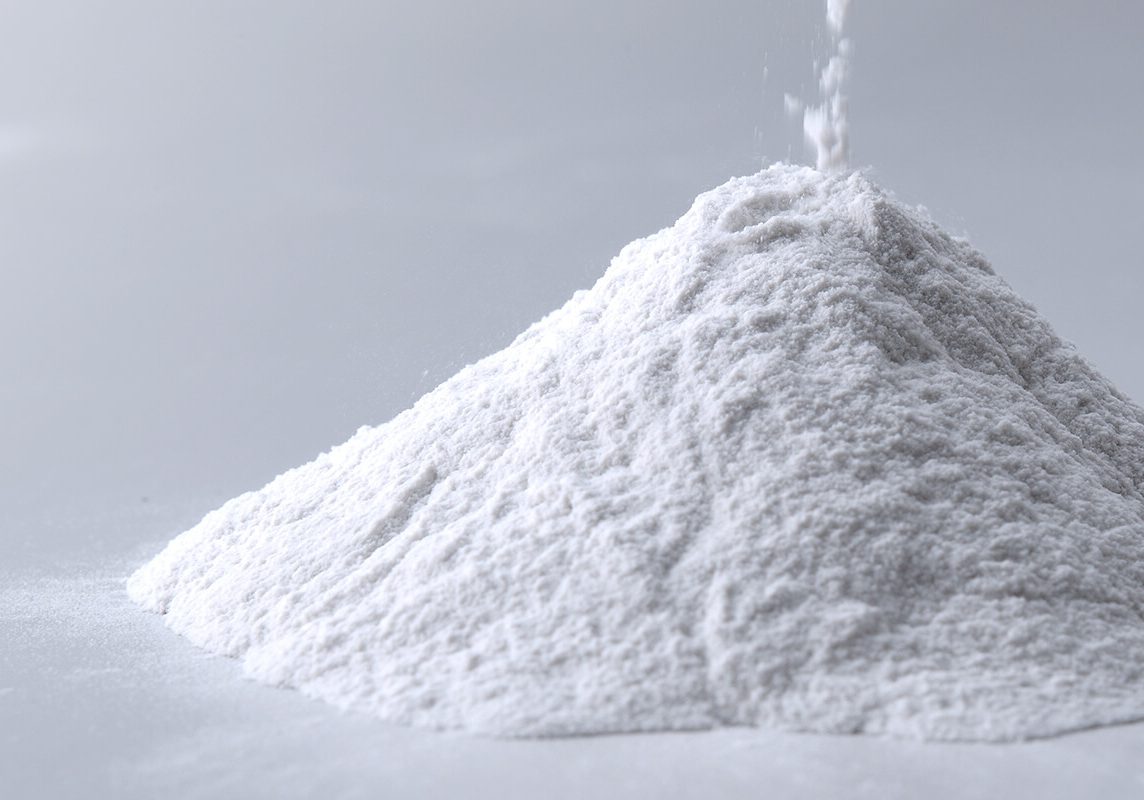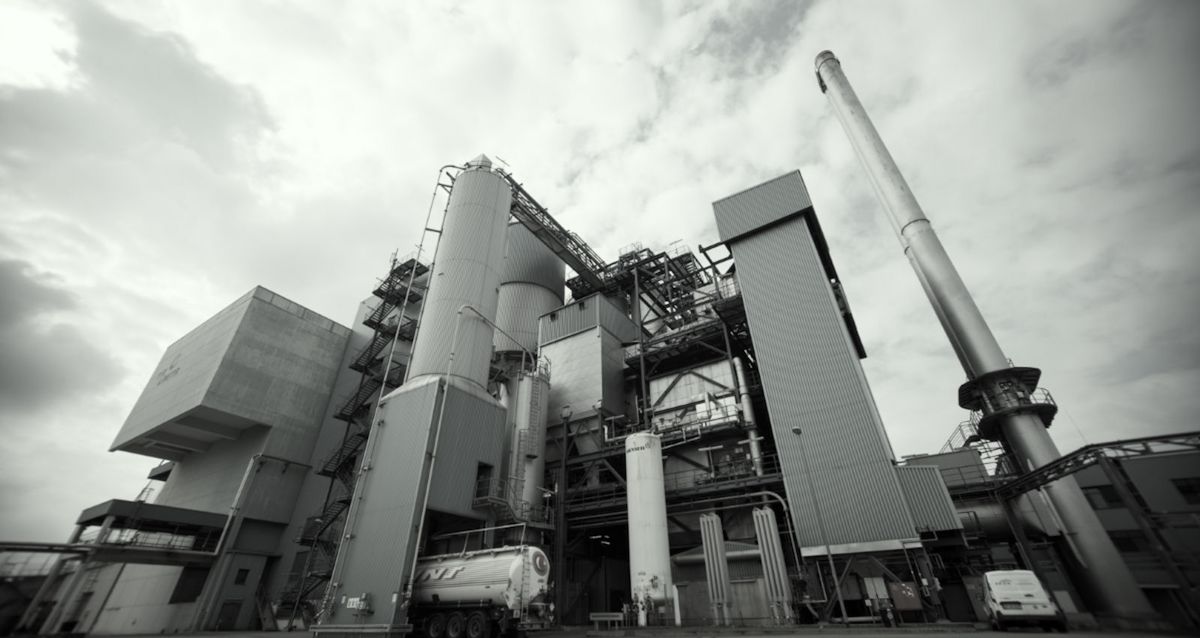Five application fields and characteristics of wollastonite
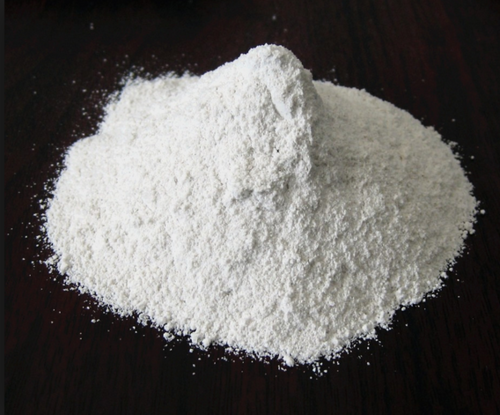
However, most of wollastonite are white, and very few are yellow, green, brown and other colors. Pure wollastonite is white or bright white with vitreous luster. The purity of wollastonite with the highest purity can reach 99%, and the reflectivity of wollastonite with a particle size of less than 44 μm can reach 92~96%, so it has high whiteness. . These valuable process characteristics are widely used in high-grade ceramic products, high-quality white paints or glossy coatings. The ultra-fine acicular wollastonite powder can replace other short-fiber mineral materials and synthetic crystals as functional reinforcing materials, and has extremely high application value in industry.
Ceramics
Wollastonite is widely used in the ceramic industry, accounting for about 50% of the total domestic use. In the ceramic industry, wollastonite is mainly used to produce art porcelain, sanitary porcelain, glazed tiles, electric porcelain, daily-use porcelain and chemical ceramics. Because the grade of wollastonite is usually about 80%, the whiteness of natural wollastonite is also very high, which is very suitable to replace the mixture of SiO2 and CaO in ceramic glaze, and use wollastonite as the mixture of ceramic glaze The fired ceramic has a very smooth and smooth glaze.
Rubber
The application research of wollastonite in the rubber industry has been carried out earlier in China. It can largely replace titanium dioxide, clay and lithopone in light-colored rubber, play a certain reinforcing role, and can improve the covering ability of white colorants. Play a whitening effect. After the organic modification of wollastonite, not only its surface has lipophilicity, but at the same time, due to the double bond in the molecule of sodium oleate of the treating agent, it can participate in vulcanization, enhance cross-linking, and the reinforcing effect is greatly improved.
In the coating industry, wollastonite powder can be used as an extender pigment to replace a certain amount of white pigments such as titanium dioxide, because wollastonite powder has high surface gloss, good waterproof and aggressiveness, and low cost, which can increase the coating film. thickness and adjust coating rheological properties.
Papermaking
The application of wollastonite in the paper industry is quite different from other fillers. It is not a simple filling like traditional fillers, but mainly relies on a higher aspect ratio to realize the interweaving of wollastonite and plant fibers to form plants. The mesh structure of fiber-mineral fiber can effectively improve the opacity and printing adaptability of the produced paper, improve the uniformity, and reduce the manufacturing cost to replace some short fibers of plants.
Plastic
In the plastics industry, wollastonite's high electrical resistance, low dielectric constant and low oil absorption make it a distinct advantage over other non-metallic mineral materials. The compatibility of the modified wollastonite with plastics is greatly improved, and the needle-like crystal shape that it maintains after crushing can improve the properties of plastics and ensure that the products have high thermal stability, low dielectric Electrical properties, low oil absorption and high mechanical strength, while reducing the cost of the product. Nylon is one of the largest markets for wollastonite applications. Wollastonite reinforced nylon 6 or nylon 66 after modification with silane coupling agent can improve bending strength and tensile strength, reduce moisture absorption rate and improve dimensional stability.
Why should silica be modified? What methods are there?
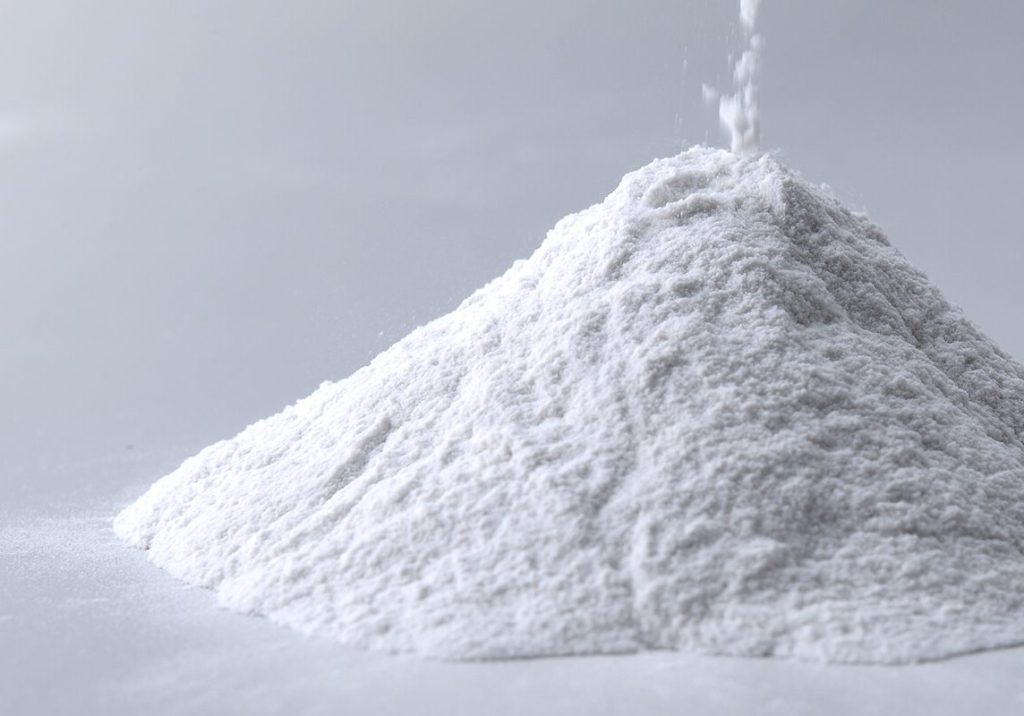
The surface layer of silica has a large number of hydroxyl groups, which interact with each other, thereby affecting the overall performance of the material. For example, silica agglomerates due to the hydrophilic nature of the surface hydroxyl groups. Because of this phenomenon, when the rubber composite material is subjected to a certain load, the relative friction force inside the material will increase, affecting the mechanical properties of the composite material.
Because of a large number of hydroxyl groups, which are alkaline, silica will also be weakly alkaline. When encountering some alkaline accelerators, it will react with them, which will cause some problems in the vulcanization process of rubber composites. Influence, will lead to a longer time for rubber vulcanization, which will produce a series of chain reactions, such as increasing internal friction, reducing crosslinking density and so on.
In traditional industrial and practical applications, it is divided into two types according to the properties of modifiers, namely organic and inorganic modification. Among them, the modification method of organic matter is widely accepted, which can be divided into three types according to the process method, dry method, wet method and autoclave method.
For the modifiers that have been determined, different modification methods can be matched to achieve different modification effects. There are many modification techniques, each with its own advantages and disadvantages.
One is to graft the surface of the silica particles to the polymer with similar properties, which is commonly known as the surface grafting modification method, which is suitable for grafting polymers with smaller molecular weights, but the conditions for grafting are also very strict;
The second is the modification method of silane coupling agent. In the preparation process, the functional group on the coupling agent reacts with the hydrophilic group of the particle, and on this basis, the material is modified;
The third is the method of ionic liquid modification. The silica is placed in the particle liquid to react with it to improve the dispersibility of the silica. Although this method has low pollution and is easy to operate, the modification effect is poor;
The fourth is macromolecular interface modification. This modification method has poor effect when used alone, but can cooperate with the coupling agent in a specific environment;
The fifth is to use the modification method in combination, that is, to combine a variety of modification methods, take advantage of their strengths and avoid their weaknesses, and integrate their respective advantages to improve the quality of modification. For example, the in-situ modification method first developed by Michelin, roughly realizes the process of adding silane coupling agent and silica and other substances to the rubber during mixing, and the two react under certain system conditions. There is some force between the coupling agent and the rubber mixture, which can not only destroy the aggregates of silica, but also hydrophobically modify the silica. However, this method requires a lot of energy and is difficult to control efficiently, so appropriate improvements should be made to avoid these defects. In addition, the remaining coupling agent is likely to remain in it, which affects the properties of the composite material.
There is also a dry modification technology similar to in-situ modification. The purpose is to obtain highly hydrophobic silica through the reaction of silane coupling agent and silica under high temperature conditions. However, in this process , also consumes a lot of energy.
At present, the wet modification technology is accepted, which requires the silane coupling agent to react with silica in a solution. This technology not only does not need to consume a lot of energy, but also is relatively controllable.
With the development of science and technology, polymer modification has become a new development trend. Because this new composite material combines the advantages of two or more materials, and has very superior bonding properties, and solves the problem of non-uniform expansion coefficients of the two experimental materials under high temperature and high pressure, it is a rubber composite material. The study of mechanical behavior has made a good foundation. As far as silicone rubber is concerned, the use of nano-calcium carbonate modified silica as a reinforcing agent can not only satisfy the reinforcement effect, but also improve the rheological properties of the silicone rubber, thus achieving the effect of improving the processing of molded products.
Whether the surface modification effect is good, look at these 10 indicators!
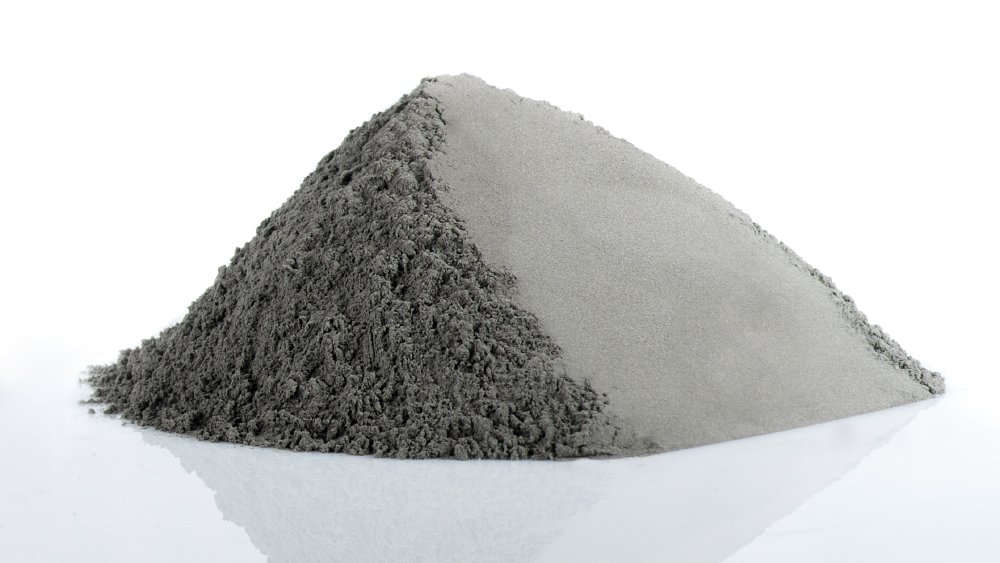
In the research and production of powder surface modification, what are the commonly used characterization methods of modification effect?
Wetting Contact Angle
Concept: Wetting contact angle is the main criterion for wettability. If an organic surface modifier is used to modify the surface of an inorganic filler, the more complete the coating of the modifier on the surface (the greater the coverage), the more likely the inorganic filler will be. The larger the wetting contact angle in water.
activation index
Concept: The surface of the inorganic powder after surface modification is non-polar. Due to the huge surface tension in water, it will float and not sink like an oil film. Therefore:
Activation index = mass of the floating part in the sample (g) / total mass of the sample (g)
For inorganic powders without surface activation (ie modification), the activation index = 0; when the activation treatment is the most thorough, the activation index = 1.0.
Oil absorption value
Concept: The oil absorption value is usually expressed by the mass of linseed oil required for a 100g sample. Most fillers use the oil absorption value to roughly predict the filler's demand for resin.
Dispersion stability in solution
Concept: It is characterized by measuring the change of turbidity, density, sedimentation amount, etc. at a certain position over time after dispersing and standing the particles. Generally speaking, the slower the change of turbidity, density, sedimentation amount, etc. The better the dispersion stability in solution.
Deposition time
Concept: Generally speaking, the better the dispersion, the slower the settling speed and the longer the settling time. Therefore, the settling time can be used to relatively compare or evaluate the surface modification effect of the powder.
Adsorption type
Concept: Adsorption types can be divided into physical adsorption and chemical adsorption. The surface modifier molecules chemically adsorbed on the surface of powder particles are stronger than physical adsorption, and are not easily desorbed when vigorously stirred or mixed or compounded with other components.
Coverage
Concept: The coating amount refers to the quality of the surface modifier adsorbed on the surface of a certain mass of powder. The coverage rate is the percentage of the surface modifier molecules covering the surface of the powder (particle) to the total surface area of the powder (particle).
Particle size distribution
Concept: The change in particle size and distribution of powder after surface modification can reflect whether the particles have agglomerated during the surface modification process, especially whether hard agglomeration has occurred.
Particle morphology
Concept: Direct observation of the morphology of the coating layer on the powder surface is valuable for evaluating the effect of powder surface modification.
Other
For other purposes of powder surface modification, such as imparting electrical, thermal, flame retardant, antibacterial, wave absorbing, adsorption and other functions or properties to the powder surface, corresponding performance testing, characterization and evaluation methods can also be adopted.
What is the appropriate fineness of talc for plastic reinforcement and modification?
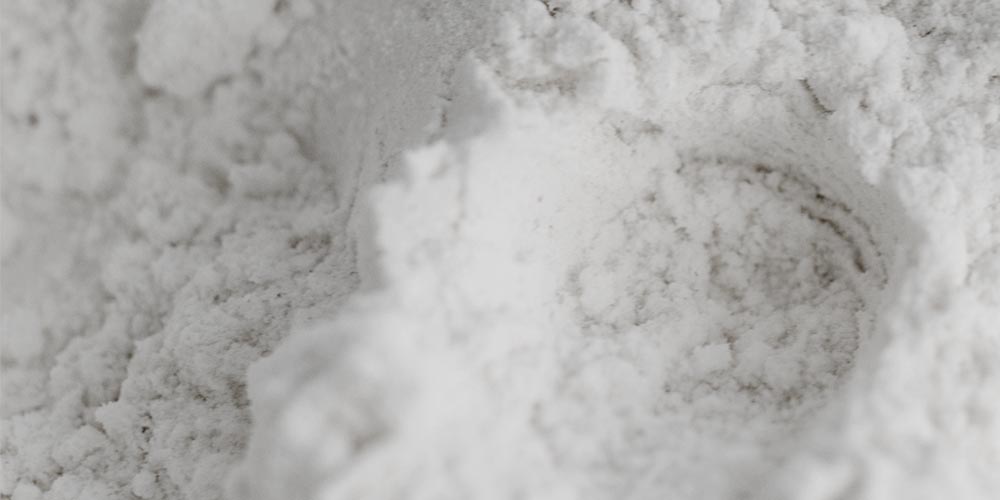
Plastic reinforcement modification is an important application field of talc, especially for polypropylene modification in the automotive and home appliance industries. Micronization is the development trend of talc products. The change trend of talc powder fineness (d50) used for enhancement and modification is as follows: in the 1980s, it was mainly 10-15µm, in the 1990s, it was mainly 8-10µm, and in 2000, it was mainly 5-10µm. , currently in the range of 3.5 to 7 µm.
Generally speaking, the finer the product, the better the enhancement effect, but the cost increases, at the same time, it is easy to agglomerate, and it is difficult to process and use. It is necessary to choose a product with an appropriate fineness according to its own level of dispersion technology and the expected performance of the product, and it is not necessarily the finer the better.
The evaluation of the particle size of a talc product cannot be based only on the average particle size d50. The average particle size does not characterize the particle size distribution of the product, nor does it characterize the maximum particle size. The evaluation requires at least two indicators, the average particle size d50 and the maximum particle size d98 (or d100). The size and amount of coarse particles have a significant adverse effect on the mechanical properties of the product and need to be strictly controlled.
Generally speaking, the finer the product, the better the enhancement effect, but the cost increases, at the same time, it is easy to agglomerate, and it is difficult to process and use. It is necessary to choose a product with an appropriate fineness according to its own level of dispersion technology and the expected performance of the product, and it is not necessarily the finer the better.
The evaluation of the particle size of a talc product cannot be based only on the average particle size d50. The average particle size does not characterize the particle size distribution of the product, nor does it characterize the maximum particle size. The evaluation requires at least two indicators, the average particle size d50 and the maximum particle size d98 (or d100). The size and amount of coarse particles have a significant adverse effect on the mechanical properties of the product and need to be strictly controlled.
Main applications and market prospects of nano calcium carbonate
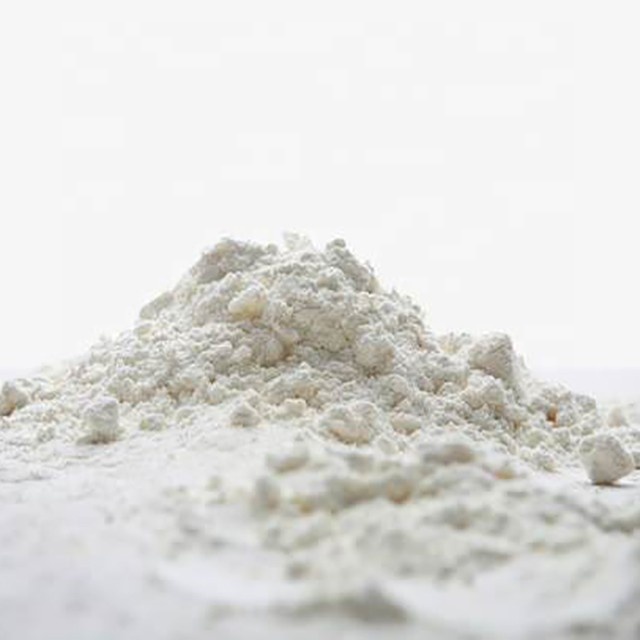
The particle size of nano calcium carbonate is between 1~100nm, including ultrafine calcium carbonate (particle size 20~100nm) and ultrafine calcium carbonate (particle size 1~20nm). Compared with ordinary calcium carbonate, nano-calcium carbonate has obvious advantages in reinforcement, dispersibility, heat resistance and dimensional stability, making it one of the most widely used nano-filling materials. Therefore, the preparation, modification and industrial application of nano-calcium carbonate have also attracted more and more attention in the industry.
As a nano-scale filling modifier, nano-calcium carbonate has a very broad application prospect.
Plastic industry
The plastics industry is currently the industry that uses the most nano-calcium carbonate in the world. It can act as a regulator and enhancer for plastics, and the demand is very large. Due to the good dispersibility of nano-calcium carbonate, the voids and air bubbles in the plastic can be well removed, so that the plastic can shrink more uniformly and improve the mechanical properties and thermal stability of the plastic.
Rubber industry
The use of nano-calcium carbonate in rubber can improve the toughness, tensile resistance and resistance of rubber products. It can not only be used as an excellent functional material alone, but also can be mixed with filler materials such as titanium dioxide and silica to reduce the percentage of gum base in rubber products or replace some relatively expensive white fillers. At the same time, it can achieve the purpose of improving the performance of rubber products.
Paper industry
The development and use of nano-calcium carbonate in the paper industry can improve the whiteness and shading of paper, reduce the ratio of pulp in paper products, and greatly reduce the cost of paper production. At the same time, due to the addition of nanoparticles, the paper product is more flat and uniform.
Paint industry
The film-forming binders, fillers and other auxiliaries in the coating contain many reactive sites, which will interact with the reactive sites on the surface of the nano-calcium carbonate particles to form a stable and dense bonding layer, making the coating material. enhanced film performance.
In recent years, nanomaterials have widely appeared in people's production and life. Due to their excellent application performance brought about by their unique nanometer characteristics, they have attracted extensive attention of researchers. As a representative of nanomaterials, nano-calcium carbonate has been gradually developed and applied in various manufacturing industries with its filling properties. It is expected that the demand for nano-calcium carbonate will continue to rise in the next few years, and there will be a better market prospect. At the same time, due to the development of science and technology and the rise of living standards, the nano-calcium carbonate industry has been gradually upgraded and the process has been continuously improved. Nano-calcium carbonate will also be used in more emerging industries and has a very broad application prospect.
Powder surface modification effect is not good? There may be several reasons for this!
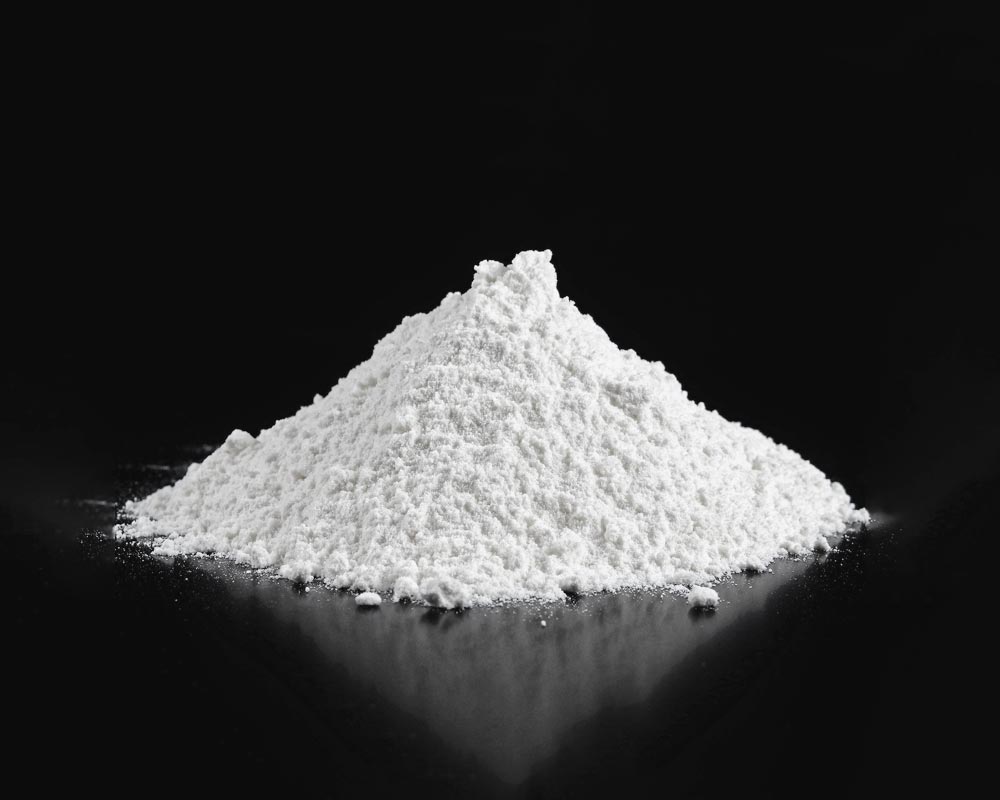
Powder surface modification is a new technology that integrates powder processing, material processing, material properties, chemical industry, and machinery. Properties of raw materials, formulation of surface modifier, surface modification process, surface modification equipment, etc.
Properties of powder raw materials
The specific surface area, particle size and particle size distribution, specific surface energy, surface physical and chemical properties, and agglomeration of powder raw materials all have an impact on the modification effect, and are one of the important factors for selecting surface modifier formulations, process methods and equipment. one.
For example, the physical and chemical properties of the surface of the powder, such as surface electricity, wettability, functional groups or groups, dissolution or hydrolysis characteristics, etc., directly affect its interaction with the surface modifier molecules, thereby affecting the effect of its surface modification. At the same time, the physical and chemical properties of the surface are also one of the important considerations in selecting the surface modification process.
Surface Modifier Formulation
The surface modification of powder is largely achieved by the action of surface modifier on the surface of powder. Therefore, the formula (variety, dosage and usage) of the surface modifier has an important influence on the modification effect of the powder surface and the application performance of the modified product. The surface modifier formula is highly targeted, that is, it has the characteristics of "one key to open one lock". The formulation of the surface modifier includes the selection of varieties, determination of dosage and usage, etc.
When selecting a surface modifier, the properties of the powder raw materials, the use or application field of the product, and the process, price, and environmental protection should be comprehensively considered, and the structure and properties of the surface modifier and its mechanism of action with the powder should be considered. , make a targeted selection.
Surface modification process
After the formulation of the surface modifier is determined, the surface modification process is one of the most important factors that determine the effect of surface modification. The surface modification process must meet the application requirements or application conditions of the surface modifier, have good dispersibility of the surface modifier, and can achieve uniform and firm coating of the surface modifier on the surface of the powder; at the same time, it requires a simple process and parameters. Good controllability, stable product quality, low energy consumption and low pollution.
Surface modification equipment
The surface modification or surface treatment technology of powder mainly includes surface modification methods, processes, surface modifiers and their formulations, and surface modification equipment. Among them, when the surface modification process and modifier formula are determined, the surface modification equipment becomes the key factor affecting the powder surface modification or surface treatment effect.
The performance of surface modification equipment does not depend on its rotational speed or complex structure. The key lies in the following basic process characteristics: 1. Dispersibility of powder and surface modifier; 2. Opportunities for contact or action; ③ modification temperature and residence time; ④ energy consumption and wear per unit product; ⑤ dust pollution; ⑥ equipment operation status.
A high-performance surface modifier should be able to make the powder and the surface modifier have good dispersibility, and equal opportunities for contact or action between the powder and the surface modifier, so as to achieve uniform single-layer adsorption and reduce the amount of modifier. At the same time, the modification temperature and reaction or residence time can be easily adjusted to achieve firm coating and complete evaporation of the solvent or diluent (if a solvent or diluent is used); in addition, the energy consumption and wear per unit product should be low, No dust pollution (powder spillage not only pollutes the environment, deteriorates working conditions, but also loses materials and increases production costs), the equipment is easy to operate and runs smoothly.
Surface Modifiers, Processes and Equipment For Silicon micropowder
Silicon micro powder is a silica powder material made of natural quartz ore, fused silica, etc. as raw materials, which is processed by grinding, precision classification, and impurity removal. It has high insulation, high thermal conductivity, high thermal stability, Acid and alkali resistance, wear resistance, low thermal expansion coefficient, low dielectric constant and other characteristics, are widely used in the copper clad laminate industry, epoxy plastic packaging industry, electrical insulation material industry and adhesive industry.
In order to improve the interface between silicon micropowder and organic polymer materials and improve its application performance, it is generally necessary to modify the surface of silicon micropowder. The key to the surface modification of silica micropowder is how to make the modifier uniformly disperse on the particle surface, and at the same time ensure the chemical bonding conditions between the modifier and the particle surface. Ultra-fine silicon powder has a large specific surface area, and how to make the modifier evenly dispersed on the particle surface is a difficult problem that plagues silicon powder manufacturers.
- Surface modifier
Silane coupling agent is the most commonly used modifier for surface modification of silicon micropowder. It can convert the hydrophilicity of silicon micropowder into an organic hydrophilic surface, and can also improve the wettability of organic polymer materials to its powder. Make the silicon micropowder and the organic polymer material achieve a firm covalent bond interface.
However, the application effect of the silane coupling agent is related to the selected type, dosage, hydrolysis situation, substrate characteristics, application occasions, methods and conditions of organic polymer materials. Therefore, in order to use a silane coupling agent well, it is necessary to carefully study its structure, properties and the mechanism of its interaction with silicon micropowder, so as to correctly select and use a good silane coupling agent.
- Surface modification process
Because the dry process is relatively simple and the production cost is relatively low, at present, the surface modification of silicon micropowder in China basically adopts the dry process. However, the specific surface area of the ultra-fine silicon powder is relatively large, and the mechanical dispersion of the equipment alone cannot make the treatment agent evenly dispersed on the surface of the particles, so the effect of dry modification is relatively poor.
Wet modification is carried out under liquid phase conditions. The modifier can disperse the particle surface relatively uniformly. Generally speaking, the modification effect is good. However, the wet modification process is complicated, requires drying and depolymerization processes, and the production cost is relatively high. high, but the wet modification effect is better.
- Surface modification equipment
The selection of surface modification equipment is a crucial part of the surface modification of silicon micropowder. When selecting surface modification equipment, the following requirements should be considered:
At present, there are many surface modification equipments in China, but some surface modification equipments are not manufactured in accordance with the mechanism and process requirements of surface modification of silicon powder, resulting in poor surface modification effect. Therefore, it is necessary to modify the purchased modified equipment. Only after the equipment is transformed and matched can it achieve better results.
Finally, it is stated that in order to do a good job in the surface modification of silica micropowder, it is necessary to carefully understand the structure and properties of the surface modifier based on the mechanism of surface modification, and at the same time consider the substrate and main formula of downstream organic polymer products. And technical requirements, after comprehensive consideration, select a reasonable modifier, and on this basis, determine the surface modification process and equipment.
![]()
What non-metallic mineral powders are contained in girls' favorite cosmetics?
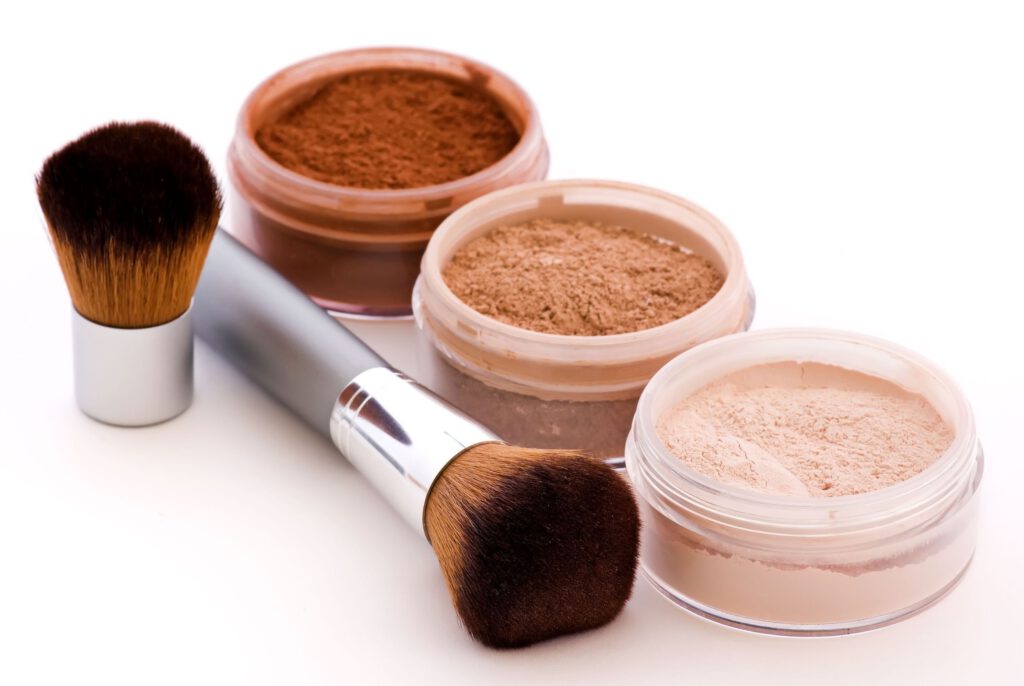
Liquid foundation is the most basic makeup product that girls will use. It is light in texture, easy to apply, and less greasy. It is a very popular foundation cosmetic today. It is suitable for most skins. Nowadays, many liquid foundations are used for beauty and skin care. Combined, it becomes a multifunctional product.
- Talc Powder Talc powder can make the liquid foundation spread smoothly on the skin and make the skin smooth.
- Kaolin clay and titanium dioxide make the liquid foundation have strong covering power, and can eliminate the glitter of talc powder.
- Calcium carbonate and magnesium carbonate can absorb sweat and oil on the surface of the skin, and also have the effect of eliminating talc glitter.
- Pigments are generally mixed with inorganic pigments and organic pigments. Commonly used inorganic pigment iron oxide is mixed with red or orange organic pigment to become the pigment of foundation.
- Zinc stearate and zinc myristate make the liquid foundation have strong adhesion.
- The binder makes the above-mentioned various foundation components melt and form, mainly composed of mineral oils such as animals and plants, liquid paraffin, or synthetic fat oils.
- Other ingredients such as preservatives, antioxidants and spices, etc., and also have plant ingredients, such as seaweed extract, yam extract, vitamins, elastin, pearl powder, etc., which have the effect of repairing soft skin, moisturizing and whitening.
8 Applications of Ultrafine Grinding Technology in Food Industry

Due to the development of micronization of particles, the material surface has unique physical and chemical properties, such as good solubility, decomposition, adsorption, chemical activity, etc. Ultrafine technology involves the preparation, drying, dispersion, characterization, The process of grading, surface modification, filling and granulation is not only used in chemical industry, electronics, information, biology, building materials, national defense, environmental protection and other industries, but also in textile, food, medicine and other industries closely related to people's daily life. application.
With the advancement of science and industrial technology, ultrafine grinding technology, as an engineering discipline, plays a pivotal role in the development of the national economy. Due to the development of micronization of particles, the material surface has unique physical and chemical properties, such as good solubility, decomposition, adsorption, chemical activity, etc. Ultrafine technology involves the preparation, drying, dispersion, characterization, The process of grading, surface modification, filling and granulation is not only used in chemical industry, electronics, information, biology, building materials, national defense, environmental protection and other industries, but also in textile, food, medicine and other industries closely related to people's daily life. application.
Application of Ultrafine Grinding Technology in Food Industry
- Soft drink processing
- Fruit and vegetable processing
- Grain and oil processing
- Processing of aquatic products
- Functional food processing
- Condiment processing
- Processing of fresh bone meal (mud) of livestock and poultry products
- Ice cream processing of cold food products
Usually, the pulverization process of ultrafine pulverization technology has little effect on the original nutrients in the raw materials, and the prepared powder has good uniformity. Performance has a multifaceted impact. At present, ultrafine pulverization technology is more and more used in the production of many functional foods at home and abroad. It makes the raw materials that could not be fully digested, absorbed or utilized to be reused, thereby obtaining a variety of functional foods and new foods. The production materials increase the variety of food and improve the utilization rate of natural biological resources.
Dry Grinding Of Ultrafine Powder Below 2.5 Microns and PM 2.5
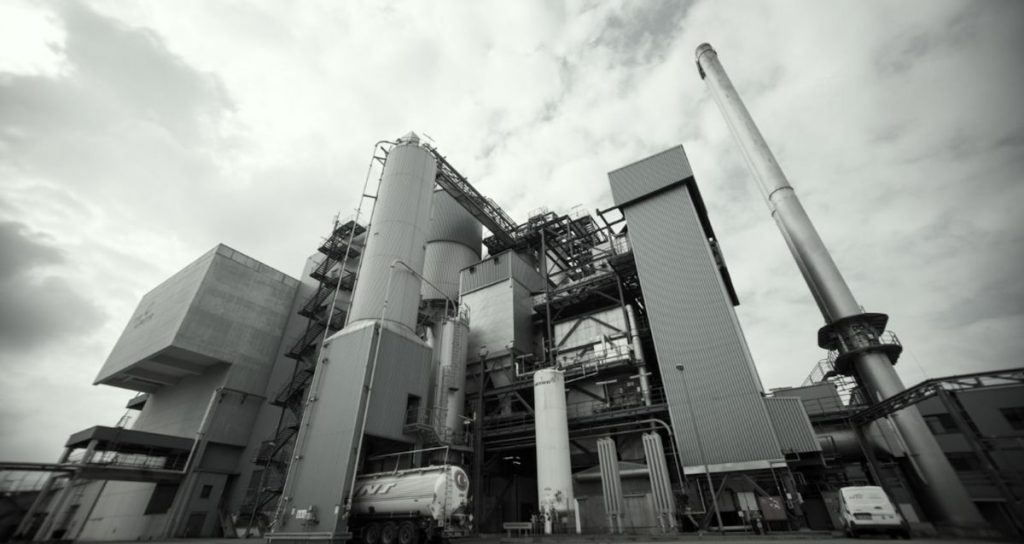
- Why should we start with PM2.5 for the relationship between haze and dry classification of ultrafine powder? In my opinion, 2.5 microns is a special data for split particles, and now we all know a meteorological parameter: PM2.5. Refers to the particles in the ambient air with an aerodynamic equivalent diameter of less than or equal to 2.5 microns. Compared with coarser atmospheric particles, PM2.5 has a small particle size, a large specific surface area, strong activity, and has the characteristics of long residence time in the atmosphere and long transportation distance. It is a fine particle that is difficult to overcome. Medium and relatively large particles follow different motion laws. The ultrafine powder below 2.5 microns has a more special motion law, which has become a difficult problem for powder scientists in various countries in the production of dry powder. Below this scale, it is difficult to classify the particles in the air, that is to say, it is still difficult to separate powder particles below 2.5 microns in the modern powder industry. Therefore, the study of PM2.5 has practical guiding significance for the production of modern ultrafine powder particles for the continuous dry production process of split particles above 6000 mesh.
- Review and Prospect of the Development of Powder Classification Technology Another interesting data is PM25, here I refer to powder particles with an equivalent diameter of 25 microns or more. In the classification process of powder particles, the screening process is widely used in the production of various powders, and is commonly seen in daily life, and has a very wide range of applications in many large industrial sectors such as building materials industry and food processing. In powder production terms, 25 microns is approximately the pore size of a 600 mesh screen. Professional manufacturers engaged in ultrasonic vibration sieves all know: 600 mesh is a data close to the limit for general powder particle sieving, and it is difficult to mechanically sieve fine powders. Is this a coincidence or a law, we don't know yet, the existence is the truth, wait for more people to study it.
There may be a more meaningful data: 250 nanometers. The so-called nanotechnology refers to a new technology that studies the motion laws and characteristics of electrons, atoms and molecules in the scale of 0.1 to 100 nanometers. Since the distribution of ultrafine powder is within a certain range, many scholars believe that particle powder below 500 nanometers is a scale limit of nanotechnology. At this time, most of the particles have reached below 100 nanometers, so it also appears Special physicochemical properties of nano-sized particles. In my opinion, D97 has a physical size of 500 nanometers. It will be another powder peak that is not easy to climb in powder technology grinding and grading, and it will be another new direction for powder development in the future. The general academic community believes that for solid powder or fiber, when its one-dimensional size is less than 100nm, that is, it reaches nanometer size, it can be called a so-called nanomaterial. For ideal spherical particles, when the specific surface area is greater than 60m2/g, its diameter will be smaller than 100nm, reaching nanometer size.
- Study the practical significance of dry classification of ultrafine powders below 2.5 microns. Powder particles below 2.5 microns will show many characteristics that cannot be achieved by wet methods using the dry production process. It is also the key technology for powder production in some industries.
However, powder particles below 2.5 microns are like a lively, naughty and super energetic urchin in dry powder production, and people seem to have no way to tune them. The smog pollution of PM2.5 has disturbed people's sleep and sleep, and caused immeasurable economic and people's health losses. However, for our professionals engaged in ultra-fine powder materials, this is also the best textbook and free laboratory for studying ultra-fine powder materials. Studying the laws of its production, grading, collection and dissipation will not only affect today's The ultrafine powder industry has practical guiding significance, and also has great theoretical guiding significance for the governance of haze.
Dry production of powder particles below 2.5 microns is a forward-looking production project in the modern powder industry. Countries are carrying out basic theories and production processes with broad industrial prospects. It has unlimited uses in many fields such as modern manufacturing, national defense technology, composite materials, traditional Chinese medicine processing, ceramic industry, environmental protection industry, medical and health care and so on.

